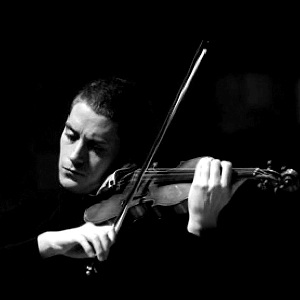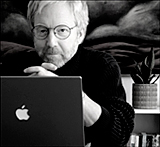Kristóf Baráti at the Phillips Collection
By Stephen Brookes • The Washington Post • January 19, 2015
There’s nothing easy about 90 minutes of solo violin music. It’s a high-wire act for any violinist — not only must he carry the concert’s entire melodic, harmonic and rhythmic weight single-handedly; he also must make the music so compelling that any limitations of the solo form just seem to vanish. The challenges are huge, but as the Hungarian virtuoso Kristóf Baráti proved in a gripping, extraordinarily powerful performance at the Phillips Collection on Sunday, so are the rewards. Kristóf BarátiThe six sonatas and partitas that Bach wrote for unaccompanied violin make up the spiritual heart of this repertoire, and Baráti opened with two Bach-inspired sonatas from 1924 by the celebrated Belgian violinist Eugène Ysaÿe. Rather than tossing off these virtuosic showpieces as mere appetizers, though, Baráti probed into them with extraordinary intensity and an almost orchestral range of expression. Virtually motionless, eyes closed to the world, he seemed to immerse himself in the sonatas as much as play them — a self-effacing lack of showmanship that let the music emerge with unexpected power.
Kristóf BarátiThe six sonatas and partitas that Bach wrote for unaccompanied violin make up the spiritual heart of this repertoire, and Baráti opened with two Bach-inspired sonatas from 1924 by the celebrated Belgian violinist Eugène Ysaÿe. Rather than tossing off these virtuosic showpieces as mere appetizers, though, Baráti probed into them with extraordinary intensity and an almost orchestral range of expression. Virtually motionless, eyes closed to the world, he seemed to immerse himself in the sonatas as much as play them — a self-effacing lack of showmanship that let the music emerge with unexpected power.
But if the Ysaÿe works were impressive, Baráti’s reading of Bach’s Partita No. 2 in D Minor, (BWV 1004) — the concert’s center of gravity — was nothing less than revelatory. A five-part dance suite that concludes with a searing chaconne, the partita may be the greatest of all works for solo violin, and Baráti’s performance was, in a word, masterful. Probing, austere, meditative, it rang with a rare sense of authenticity and almost majestic scope.
Bach was also the inspiration for Béla Bartók’s Sonata for Solo Violin, BB 124,— which opens with a chaconne-like movement — and Baráti turned in a reading that was almost painful in its intensity of feeling. The work pushes the violin to the limits with a wildly inventive palette of sounds, and its often wrenching emotional landscape (it was written in 1944) makes it a work not for the faint of heart. But Baráti played it with such insight and understanding that the audience erupted in a sustained standing ovation at the end, bringing him back for an encore, Paganini’s Caprice No. 1.


Reader Comments